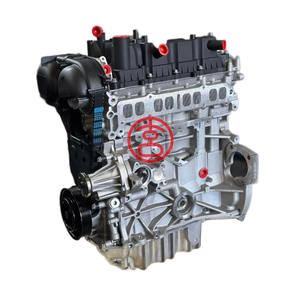Opening the Power of Engines: A Comprehensive Guide to Efficiency and Efficiency
Understanding the intricate auto mechanics of engines is essential for both performance fanatics and daily motorists. The responses might redefine our technique to engine performance and efficiency in ways that are both enlightening and important.
Understanding Engine Basics
What constitutes the essential mechanics of an engine? At its core, an engine is a device designed to convert gas into mechanical power with a collection of regulated explosions or burning procedures.
The crankshaft then transforms this direct motion into rotational energy, which inevitably powers the automobile. The camshaft controls the opening and closing of the valves, controling the intake of air and gas and the expulsion of exhaust gases. Furthermore, the engine counts on a thoroughly calibrated fuel-air mixture, ignition system, and cooling down system to make sure optimum efficiency and effectiveness.
Understanding engine basics additionally involves recognizing the value of engine cycles, such as the four-stroke cycle, that includes consumption, exhaust, compression, and power strokes. Each phase is crucial in guaranteeing the engine operates smoothly and effectively. Mastery of these fundamental auto mechanics lays the foundation for exploring a lot more intricate engine dynamics and performance metrics, essential for enhancing both power result and performance.
Trick Efficiency Metrics
Trick efficiency metrics are necessary for examining an engine's performance and power result, offering valuable insights for both producers and consumers. These metrics offer as benchmarks for engine performance, enabling informed decisions in production, investing in, and design.
Among the key metrics is horse power, which evaluates the engine's capacity to execute work over time. Torque, gauged in pound-feet, is an additional vital statistics that indicates the engine's rotational pressure, straight impacting velocity and pulling ability. Fuel effectiveness, typically determined in miles per gallon (MPG) or litres per 100 kilometers (L/100km), analyzes how efficiently the engine converts gas into motion, impacting ecological factors to consider and operational expenses.
Furthermore, thermal efficiency steps exactly how well an engine converts fuel power right into useful work, exposing understandings into power losses largely with heat. Emission degrees, consisting of CO2 and NOx, are also critical, mirroring the engine's environmental effect and compliance with governing requirements.

Tuning Techniques for Efficiency
Tuning methods play a significant role in improving engine effectiveness by optimizing performance metrics identified in earlier discussions (ford fiesta engine). Different techniques exist to adjust an engine, each adding to enhanced gas economic climate and minimized discharges
One efficient method is changing the air-fuel ratio, making certain the engine runs within the optimal combustion regimen. A leaner combination can improve gas efficiency, yet it needs to be balanced to avoid misfires or engine knock. In addition, reprogramming the engine administration system can alter specifications such as ignition timing, which even more enhances effectiveness while preserving power output.
An additional crucial approach entails customizing the intake and exhaust systems. Upgrading to high-performance air filters and exhaust headers can minimize back stress, promoting much better airflow. This enables the engine to take a breath more freely, causing important link improved combustion performance.
Moreover, the execution of innovative tuning tools, like dyno screening, supplies precise information that makes it possible for targeted modifications. On a regular basis monitoring these performance metrics makes certain that tuning initiatives produce the wanted performance results. Jointly, these techniques not just bolster engine efficiency but also add to long-term sustainability in engine operations.
Upkeep for Optimal Performance
Normal engine maintenance is crucial for attaining ideal efficiency and longevity. A well-maintained engine not only runs effectively however likewise minimizes the danger of costly repairs and break downs. Trick elements calling for routine attention consist of oil, filters, belts, and spark plugs.
Transforming the engine oil at recommended periods is critical, as oil lubricates relocating components and prevents getting too hot. In a similar way, changing oil and air filters click to read more makes certain that contaminants do not hinder engine function. Overlooking these elements can bring about minimized performance and potential engine damage.
Additionally, examining and replacing worn belts and hoses is vital to stop sudden failures. Timing belts, particularly, should be changed according to the maker's schedule to prevent catastrophic engine damage.
Flicker plugs should also be examined and replaced as needed, considering that they play a critical function in ignition and fuel efficiency.
Future Trends in Engine Modern Technology
Welcoming improvements in modern technology, the dig this future of engine style is poised to reinvent performance and efficiency throughout different applications. One of the most substantial patterns is the shift toward electrification. Crossbreed and completely electrical powertrains are ending up being progressively traditional, offering minimized exhausts and enhanced gas effectiveness. This transition is not simply a requirement but a fad driven by regulative stress and customer demand for sustainable services.
Furthermore, developments in products scientific research are leading to lighter, more powerful components that improve engine efficiency while minimizing power usage. Advanced production strategies, such as 3D printing, enable for the creation of complex geometries that enhance air movement and thermal administration, hence optimizing burning procedures.
Additionally, the combination of man-made intelligence and artificial intelligence is established to change engine diagnostics and performance adjusting. These technologies can analyze large quantities of information in real time, making it possible for anticipating upkeep and tailored performance enhancements.
Verdict
In final thought, unlocking the power of engines needs an extensive understanding of their mechanics and performance metrics. Applying reliable adjusting techniques and adhering to routine maintenance practices significantly enhance engine capacities.
Additionally, the engine relies on a meticulously adjusted fuel-air blend, ignition system, and cooling system to make certain optimum efficiency and performance.
Understanding engine essentials likewise involves recognizing the relevance of engine cycles, such as the four-stroke cycle, which includes intake, exhaust, compression, and power strokes. Mastery of these essential technicians lays the groundwork for exploring much more intricate engine characteristics and efficiency metrics, vital for enhancing both power result and effectiveness.

Accepting developments in technology, the future of engine design is poised to revolutionize efficiency and performance throughout different applications.